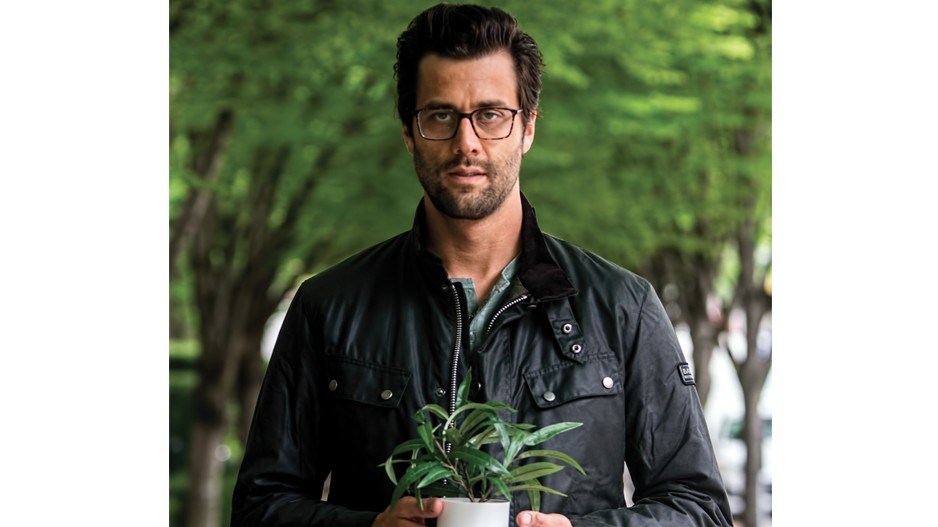By 2030, FortisBC plans to trim its greenhouse gas profile by 30%.
It expects to get halfway there by displacing fossil fuel natural gas with renewable natural gas (RNG): methane made from organics.
While there is anticipated demand growth for RNG in the trucking sector in the U.S., in Canada the biggest market is likely to be natural gas utilities like FortisBC.
FortisBC sees RNG and green hydrogen as alternatives that allow the company to lower its carbon profile while still using its natural gas infrastructure.
“It’s a very practical and ultimately lower-cost long-term alternative because it makes use of existing infrastructure,” said Scott Gramm, FortisBC’s manager of renewable natural gas.
“For example, [with] hydrogen we know we’re going to have to make some infrastructure changes, but the core infrastructure should be able to remain.”
The company’s commitment to renewable gas has spawned a series of investments in the sector. FortisBC has signed 13 offtake contracts with RNG projects across Canada.
REN Energy International Corp., for example, is planning to build a new plant in Fruitvale, B.C., that will make RNG from wood waste, with FortisBC as its customer.
The newest player in the burgeoning RNG space is Vancouver’s EverGen Infrastructure, which recently raised $47 million in equity and debt to acquire three composting plants, one of which produces biogas from agricultural waste.
Built by dairy farmers in partnership with FortisBC, the Fraser Valley Biogas plant in Abbotsford was the first RNG plant in B.C., and FortisBC was the sole buyer of its biomethane. EverGen recently bought the plant, along with Sea to Sky Soils in Pemberton and Net Zero Waste in Abbotsford.
While the Fraser Valley Biogas plant in Abbotsford produces both biogas and fertilizer from dairy farm waste, the Sea to Sky Soils and Net Zero Waste plants produce only compost. EverGen plans to add an anaerobic digester at the Net Zero Waste plant in Abbotsford, and upgrade and optimize Fraser Valley Biogas’ digester to boost its biomethane output.
FortisBC has signed a 20-year contract with EverGen to buy up to 173,000 gigajoules of RNG annually for injection into its natural gas system, upon the completion of the new digester at the Net Zero Waste plant in Abbotsford. That’s enough to heat roughly 1,730 average homes for one year.
EverGen founder and CEO Chase Edgelow, an engineer and former Macquarie Capital associate director, sees growth potential for RNG in Canada. The company’s long-term plan is to buy or build RNG plants across Canada and go public.
“It’s really an early-stage sector in Canada,” Edgelow said. “There’s a lot of growth to happen and not a lot of leadership or companies out there like ours that have a strategy to put together multiple projects like ours. We want to firmly establish ourselves as leaders and continue to develop projects of our own, but also to acquire and optimize existing projects. We’re looking at projects across Canada, some or all of which would be to the Fortis system.”
RNG’s chemical composition is no different from fossil-fuel natural gas. Both are methane, and both produce carbon dioxide when burned. Unlike natural gas, however, RNG is renewable, since it is made from organic waste. More importantly, it’s not just carbon neutral, but carbon negative.
That’s because it captures or produces methane that would otherwise eventually be released into the atmosphere through organic decomposition. Because methane is magnitudes worse than CO2 in its global warming potential, burning it, which produces CO2, is a net benefit, especially if it displaces non-renewable natural gas.
So, from an environmental and circular economic standpoint, RNG makes all kinds of sense. It makes use of human and animal waste, capturing or producing methane that would otherwise be released into the atmosphere, which can displace some natural gas. And when the gas is made from organics in an anaerobic digester, it can also produce fertilizer as a byproduct.
RNG has its limits, however. For one thing, it’s expensive compared with natural gas – about US$19 per thousand British thermal units (MBtu), according to the International Energy Agency (IEA), compared with North American natural gas prices of US$2 to US$3 per MBtu.
RNG production cannot scale the way other renewable energy sources can. If you build a methane capture system at a landfill, that’s all you get. You can’t just double the landfill and the waste going into it just to produce more RNG.
“It’s not something where I see an abundance of capital directed toward projects,” Edgelow said. “It’s a long-term investment and, secondly, most projects are smaller than the equivalent projects in the green energy space. There are not many $1 billion organic energy projects. Most projects are going to be somewhere between that $20 million and $50 million range in terms of size.”
Finally, the amount of human, agricultural and wood waste that can be sourced to make RNG is finite. However, there are a lot of landfills, sewage treatment plants and dairy farms in Canada that have yet to be tapped for RNG production, so there is a lot of room for growth before peak RNG is reached. The IEA estimates current global RNG production at 35 million tonnes of oil equivalent (MToe), with potential production of 730 MToe.
Currently, RNG represents less than 1% of FortisBC’s total natural gas supply in B.C. At most, FortisBC expects biomethane from landfills, sewage treatment plants and agricultural waste in B.C. will make up only about 5% of its natural gas supply in 2030. The rest will come from sources outside of B.C., and from other typoes of gas, like syngas from wood waste.
“That’s the reason why we’re looking at hydrogen and syngas in the future,” Gramm said.




